The wonderful and life-increasing jobs of early winter, if you have not already done them, are to feed soil organisms with mulches of organic matter on the surface. We are using 2.5cm (measure after it settles) of home-made compost mostly, and a similar depth of woodchip for the paths. This is the only preparation you need to do, before spring, unless you have a lot of weeds in which case it’s good to lay cardboard on top of them, before spreading the mulches.
Some say that winter starts on 1st December, some say at the solstice, and I reckon it begins now with the cold and winds, just after the latest full moon. We have swapped southerlies for northerlies, frosts are more common if not severe, and growth is almost stopped.
Prior to this it has been a lovely mild autumn and harvests continue to be good, ever since the warmth arrived exactly 6 months ago at an analogous time, on a full moon in late May.
To celebrate winter’s opportunities for learning, we are offering 50% discounts on all online courses until 31st December, using the coupon #nodigforlife before checkout.
We also now have product and event pages for next years courses here, together with open days on 22nd May and 4th September.


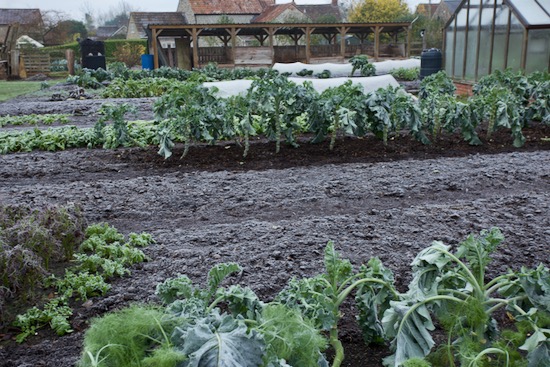
Bitter is better?
I am surprised that more people do not enjoy these leaves, which are so nutritious and easy to grow in the autumn. All these plants are sown in early July, and that makes them so easy to find space for, after onions, broccoli peas et cetera.
Many course participants have commented on how mild are the endive leaves, even though outer leaves are unblanched, and I attribute that to a combination of no dig soil quality, together with the excellent varieties Diva and Bubikopf. Both chicory and endive are bitter tasting, there’s no disputing that, but this bitterness is good for the liver and they are fresh leaves of gorgeous colour.



First year no dig
The new land continues to impress me a lot, such as the celeriac, cabbages and mustard. Adam sowed the latter after we lifted the black plastic, which had been suppressing bindweed while the amazing harvest of winter squash grew and matured They are now a staple of winter food here and in a few vegetable boxes, plus for course lunches next spring.
In one of those beds we sowed four year old seeds of mizuna and mustards – which all grew! – and they are fantastic for cutting to put in the salad bags. We also harvest some tips of the white mustard, which will eventually be killed by frost, so it’s a good green manure for no dig. In two other beds we sowed broad beans to cut as whole plants in early May, as a green manure. I cover them with Thermacrop as bird prevention and wind shelter.
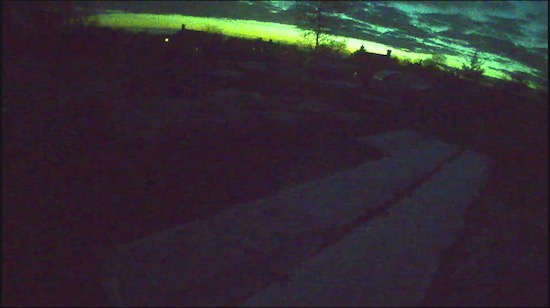

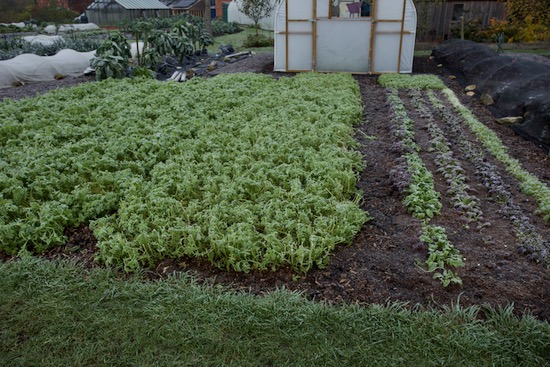
Broad beans
We have transplanted some broad beans and shall transplant the rest next week, from sowings in late October to very early November. I used to reckon on 5th November as best date to sow broad beans but I now sow a week or two earlier despite the mild autumns. Last year they were damaged by the cold weather, partly from not being established in time. It’s a balancing act between having them too small and too large, and many of you have said that you prefer a spring sowing, which I quite understand.
We did well this spring with beans sown in January in the greenhouse, with a mouse trap alongside. I use 5cm modules and prefer polystyrene to polypropylene, for more air around the roots, but the latter is possible. My CD60 trays are small for broad beans.



Wallchart, Calendar, new book
We have an exciting new product, a sowing timeline wallchart to remind you of all those opportunities! It is perennial and not date specific for any year.
We are really sorry about the calendar-template mistake, even though it does not affect any sowing dates. We are almost finished sending out calendars of the new printing, to people who ordered them before 26th October.
In mid December here my new book should arrive, self published, all about skills for vegetable growing. It’s been a huge job to write, edit and design this one, after it started life based on the second online course Growing Success. Turning the content into a book meant it kept developing, under the guidance of Anna my editor, and I wrote a lot of new material. It’s on back order and we can’t promise you would receive it by Christmas. If printing goes to plan, we shall post it and also the double pack offers, by about 18th December.
In the USA and Canada, the book will be available from Chelsea Green Publishing. For North America, it’s being printed as I write this by Marquis Printing in Quebec. I am happy to have decided to do that, rather than shipping across the Atlantic because that process has become very long and expensive. I shall have more to say about that in the spring, in relation to another book I am writing.



Bees and videos
The three colonies of bees which arrived here at solstice have given us so much pleasure, and now have even yielded some honey. Black Bee Honey were amazed by this, in such a short time. They have been caring for the bees this year.
The honey is so tasty, highly floral, and here is the video we made, edited by Alessandro of Spicy Moustache. His YouTube channel is about his suburban, no dig garden in London, and also he made a video comparing Homeacres to his garden..


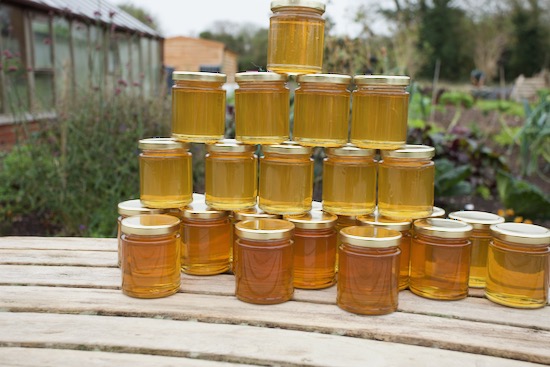
Seeds and
Where will you buy seeds this winter? I was expecting to be unable to purchase from my favourite Bingenheimer Saatgut in Germany but apparently you can, it just takes longer. Otherwise I recommend the Seed Cooperative in Lincolnshire, Real Seeds of course and Vital Seeds in Devon. Of mainstream companies I like Marshalls.
I have grown Puntarelle chicory and have forgotten why I did so because finding it delicious. The tomatoes we picked a month ago in a huff right state I know in beautiful condition, lovely in dishes of beans and stews of winter vegetables. Parsnips are not brilliant because we always seem to get canker here in the wet soil, not waterlogged at all but it’s heavy silt, great in summer but less good in winter, even with compost on top. Gladiator F1 does resist canker somewhat, even better is White Gem.
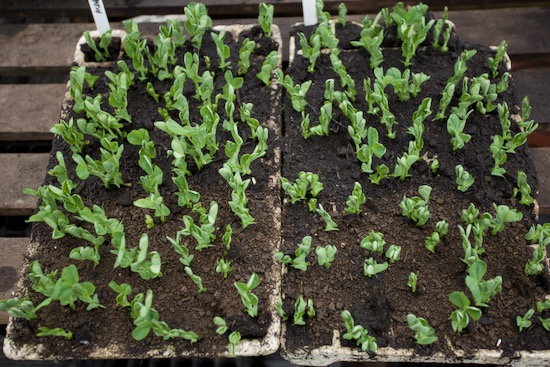





Workshops, and articles on weather, winter, repeat cropping, making compost
On 7th and 8th December I give two, day workshops near Inverness. There are still places but two thirds of tickets have sold, and the gardens are well worth a look, even in December.
I continue working with Which? Gardening whose approach fits with mine – share practical information. Ceri the editor is in the photo below, with top garden photographer Jason Ingram. He is fun to work with and has some photos in my Skills book.
Photo right is a taster of an event in six months time, top secret!

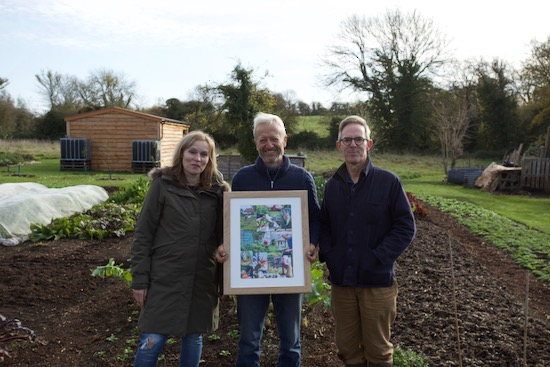













































0 comments